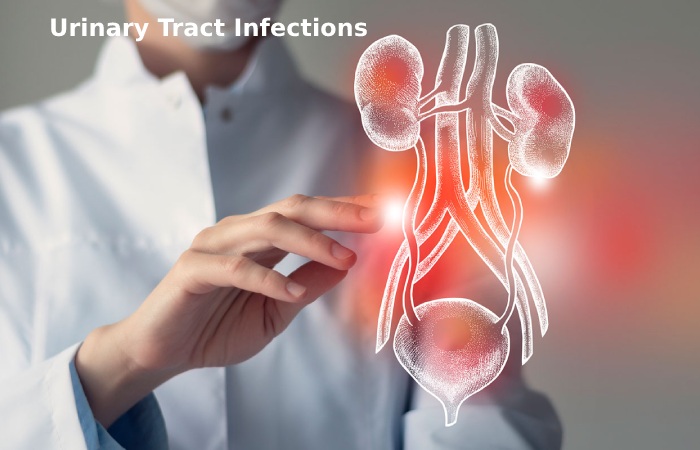Urological disorders – Your urinary system is continually working to control, manage, and eliminate urine waste. The urethra comprises several components, including the kidneys, ureters, bladder, and urethra. Like the rest of your body’s organs and systems, the urinary system is prone to dysfunction. The most common terminology for these ailments is urologic disorders and urologic diseases.
Urological problems can affect people of any age, regardless of gender, ethnicity, or gender identity. In both men and women, this directly impacts the urinary system and how pee is released. Urologic problems can potentially affect men’s reproductive organs.
Table of Contents
Common Urological Disorders
This article will explain the most common urological issues that affect both men and women and treat them.
Urinary Incontinence
Incontinence affects up to one-third of the world’s population. It is not harmful to your health, but it is inconvenient and can lead to unpleasant circumstances. Diabetes, childbirth, weak bladder muscles or sphincter muscles, spinal cord injury, certain conditions, and even severe constipation can all induce incontinence.
Urinary incontinence is frequently treatable with minor lifestyle changes. If you continue to struggle with incontinence, speak with your doctor about corrective surgery.
Stress Incontinence
Incontinence caused by stress, on the other hand, may result in leaks. Stress incontinence affects both men and women, but women are more likely to have it. Stress incontinence can occur if you have weak muscles in your bladder and urethra, making it challenging to control urine flow.
There are numerous treatments available for stress incontinence, including urethral bulking (in women) and the implantation of an artificial urinary sphincter.
Overactive Bladder
Overactive Bladder (OAB) causes an involuntary loss of pee due to a strong and sudden need to urinate as a result of the bladder’s inability to contain urine, which is known as an overactive bladder.
Your bladder muscles may stiffen up uncontrollably, almost as if in spasms.
Overactive bladder can be caused by several reasons, including neurological illnesses, diabetes, and urinary tract infections. A healthy diet, frequent physical activity, and a proactive attitude to chronic illness management, such as diabetes, can all help to prevent an overactive bladder.
If you have an overactive bladder, your doctor will work with you to build a restroom routine to regulate it better. Medication can be used to regulate an overactive bladder.
Urinary Tract Infections

Urinary tract infections are a type of infection that affects the urinary tract. And also, urinary tract infections are the most common urologic disorder, and they affect women significantly more frequently than men. UTIs are more common in women than in men. A burning sensation or a persistent desire to urinate are the most typical symptoms of a urinary tract infection (UTI). Your doctor will need a urine culture to diagnose a urinary tract infection (UTI) accurately.
Fortunately, drugs to treat UTIs are widely available. They must be treated as soon as possible to prevent further infection and eliminate the risk of repercussions. If you experience recurring urinary tract infections, see your doctor straight soon.
Pelvic Floor Dysfunction
The pelvic floor supports the bladder, vagina, and rectum. These muscles can become inflamed or irritated over time, particularly during childbirth. Peeing may be difficult or uncomfortable because you must relax your pelvic floor.
It is very advised that you seek expert assistance in learning how to relax your pelvic floor muscles. When you’re less worried, you’ll have an easier time peeing and will feel less pain when you do. If your present treatment isn’t working, your doctor may suggest vaginal medications or muscle injections.
Benign Prostatic Hyperplasia (BPH)
BPH is essentially just a medical name for an enlarged prostate; it is not a disease. Although this isn’t directly related to prostate cancer, it does signal that the size of your prostate gland has increased. 1 A man is more prone to get BPH if he has a family history of the condition, erectile dysfunction, or other health issues.
The need to urinate becomes more severe as the urethra opens, resulting in a greater urine frequency. When you urinate, you may notice that your bladder does not empty, and your urine stream is weaker than usual. If you are unable to empty your bladder, you may get a urinary tract infection.
The best treatments to manage benign prostatic hyperplasia are medications, continuous monitoring, and, if necessary, surgery. These include vaporizations using greenlight and thulium lasers, as well as minimally invasive thermotherapy, transurethral resection, and an UroLift procedure. Your doctor may also offer Rezum, which uses heated water vapor to target the prostate and reduce the surrounding tissue.
Book an appointment now, to answer all your queries. You can book an appointment with the top Urologists in Karachi through Marham.
Frequently Asked Questions (FAQs)
1- Which Urinary Disorders are Most Common?
The most common concerns are urinary tract infections, kidney stones, incontinence, and kidney disease. While many urinary tract infections are simple to treat, they can cause discomfort and anguish if left untreated.
2- What is a Urological Disorder?
The urological disorder includes various conditions that affect the body’s ability to filter and excrete urine. Both men and women of multiple ages can have these disorders. Urological conditions target certain bodily parts.
3- What are the Symptoms Associated with Urological Problems?
- Urge to urinate strongly.
- Itching when urinating.
- Frequent, little urination
- Cloudy urine
- Red, bright pink, or cola-colored urine indicates blood in the urine.

